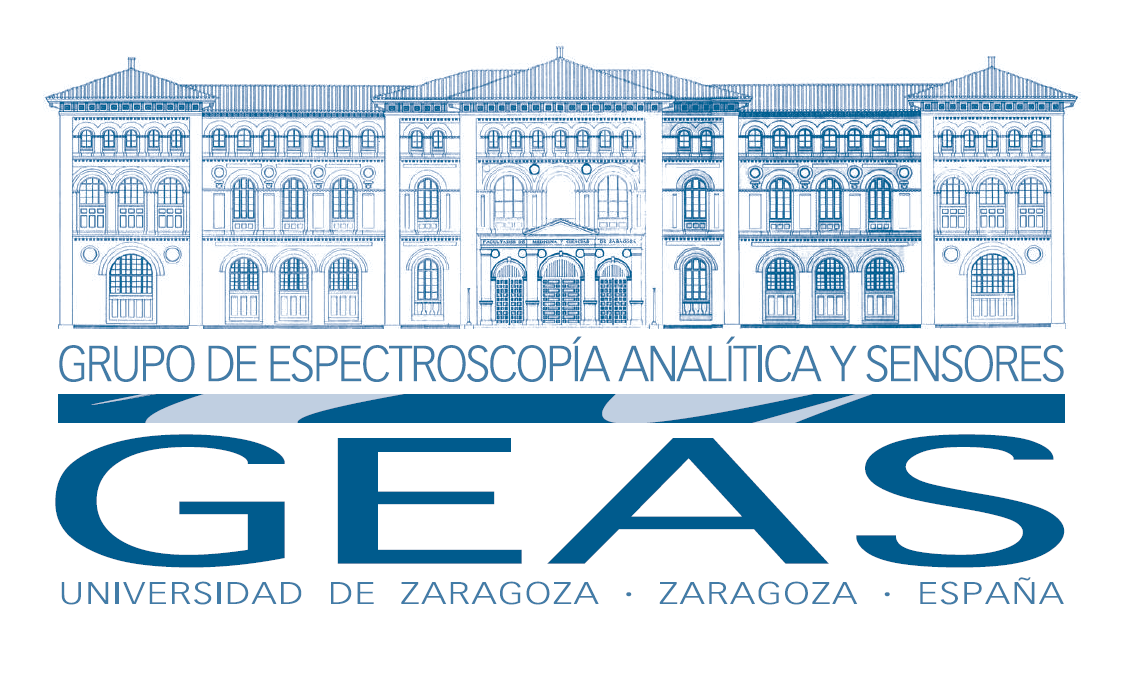
GEAS Research Lines
Our lines of research
,The research lines of the GEAS group correspond to the following three lines of work:
I. Analytical Nanometrology.
The research, development and application of new techniques, methods and analytical platforms for the detection, characterization, and quantification of both synthetic and natural nanomaterials in consumer products, the environment and biological systems, and individual particle and cell detection techniques.
II. (Bio) Electrochemical and optical analytical sensors.
The design, development, and application of catalytic (enzymes) and affinity (antibodies, aptamers) (bio)sensors for the determination in situ of contaminants, clinical parameters, and other parameters of interest in the field of environment, food safety, and biochemistry clinics.
III. Characterization of heritage materials.
Non-destructive instrumental techniques for the best knowledge and preservation of the artistic and historical heritage, with special emphasis on the study of ceramics, pigments and organic wastes.
GEAS
Analytical Nanometrology
Research and Development of new analytical techniques and methodologies for the characterization of artificial nanomaterials and nanoparticles in consumer products and strategic materials. Characterization of nanoparticles of Ag, Au, Co, Fe, SiO2, CeO2, metal oxides, etc.
Nanotechnology and analytical environmental nanoscience.
Multielemental chemical and functional speciation in natural nanomaterials of importance in ecosystems: NOM, colloids, phytoplankton, biocolloids, … etc. Application of techniques of Single Particle Analysis, Single Cell Analysis, dynamic radiation scattering, hydrodynamic chromatography and ultrafiltration techniques and AFFF (assymetric flow field fraction) for the separation of nanoparticles from Single Particle Analysis and Single Cell Analysis.
GEAS
Analytical spectroscopic and electrochemical sensors
Design and development of new catalytic (enzymatic) and affinity (antibodies, aptamers) biosensors, for the in situ quantification of endogenous clinical parameters, toxic organic molecules, contaminants, and other parameters of interest.
Electrochemical sensors for the detection and quantification of metallic nanoparticles. Electrochemical characterization of modified surfaces. Nanostructured analytical biosensors.
Applications of these (bio) sensors in the field of clinical biochemistry, environment and food safety.
GEAS
Characterization of strategic materials using non-destructive instrumental methods
Application of non-destructive instrumental techniques for the best knowledge of the artistic, monumental and natural heritage. Study of new materials.
Application of scanning electron microscopy (SEM), transmission (TEM) and field emission scanning (FESEM) techniques to the study of biological systems, materials, and nanomaterials of interest
Latest GEAS news
Article on the detection of traces of wine in archaeological samples by gas chromatography coupled to mass spectrometry in the journal Analytical and Bioanalytical Chemistry (2019)
The GEAS group researcher Josefina Pérez-Arantegui has published an article in the Anal magazine. Bioanal. Chem. (Springer) entitled: «Wine markers in archeological potteries: detection by GC-MS at ultratrace levels», in which a new analytical procedure is developed...
Concession of a new Aragón-Nueva Aquitania cross-border cooperation research project of the Government of Aragon
Professor Josefina Pérez-Arantegui (IP), University of Zaragoza, of the GEAS group, has been awarded a cross-border cooperation project between Aragon and Nueva Aquitaine, together with Professor Floréal Daniel (IP, Université Bordeaux-Montaigne), with reference AQ...
New article published in the Journal Analytical and Bioanalytical Chemistry on the separation, characterization Ag (I) / Ag (0) and quantification of silver nanoparticles in soil matrices
Researchers from the GEAS group have published a new work in the prestigious journal Analytical and Bioanalytical Chemistry (Springer), entitled: "Combination of cloud point extraction with single particle inductively coupled plasma mass spectrometry to characterize...




